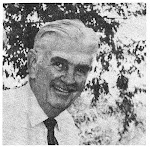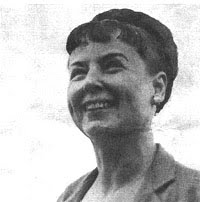In order to help Quaker Oats sell more Puffed Wheat and Puffed Rice in the 1930s, Holling created a series called “American Frontiers.” The back and sides of each cereal box illustrated a famous wilderness explorer, a Native American of the region, a panorama of the country, dwellings of the period, and local animals. Children could cut out the figures and create their own diorama (but only after they'd eaten their cereal).
Joan Hoffman of the Leslie (Mich.) Museum brought this information to light after the museum acquired the tenth in the series, about Lewis and Clark, their guide and interpreter Sacajawea, the Rocky Mountains, an Indian camp, and regional animals.
The story, Joan says, was told in a small space at the bottom of the box:
“Louisiana. Vast. Unmapped. Canada clear to the Gulf. And none but the Indians knew it. . Spain’s men had found it. France held it. Then Spain. Then France. And we bought it. What held this platter of land? And where were the Rocky Mountains? Lewis and Clark would find out… Lewis knew men, and how to handle them, hungry. Clark knew wilderness as a flea the hairs on a dog. Their roustabouts couldn’t read Greek, but from St. Louis up the Missouri. Buffalo. Badlands. Plains endless. The cold. Rockies roaring in silence… And bird-woman, Sacajawea, babe on her back, guiding. Unraveling twisted Tongues… Clean to Oregon Coast. Bite of salt water… And Lewis and Clark – they lived both to be Governors. Why not? They had twirled the hemp for an endless rope of Frontiers.”
Purple prose, yes. And simplistic facts. But enough to thrill a child eating cereal. And enough to catch the attention of Houghton Mifflin, which would lead to a contract to write and illustrate Paddle-to-the-Sea.
If you have any other pieces in the American Frontiers series, please contact the Museum to exchange information: Ms. Joan Hoffman at ronandjoanhoffman@yahoo.com.
Subscribe to:
Post Comments (Atom)









No comments:
Post a Comment